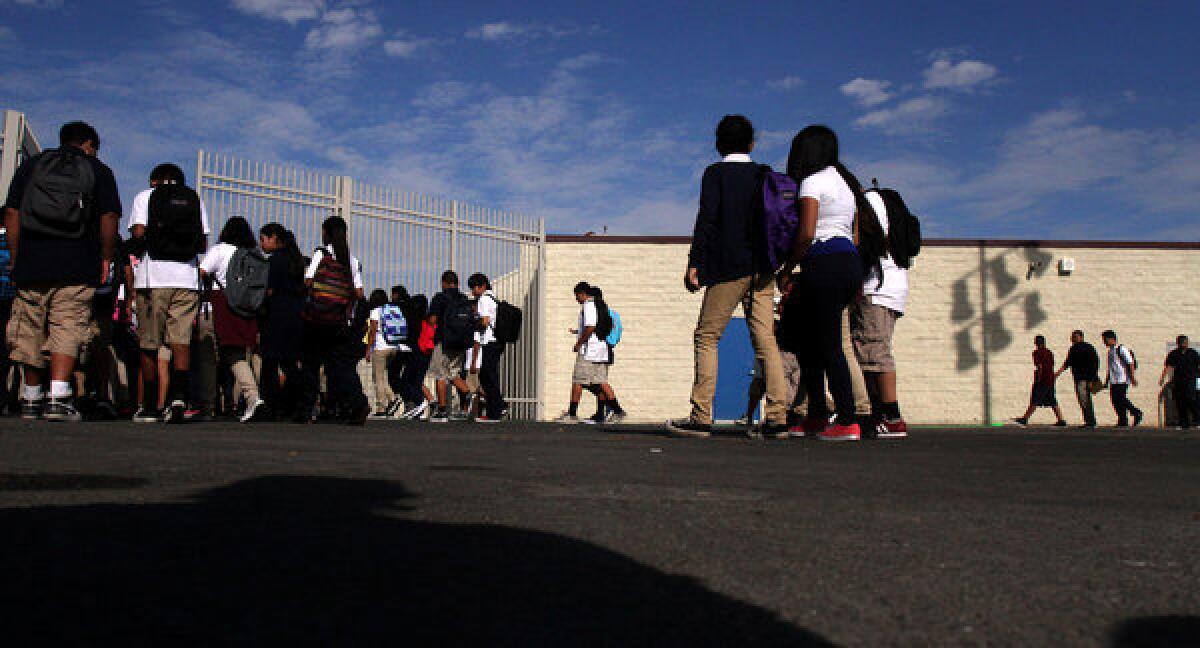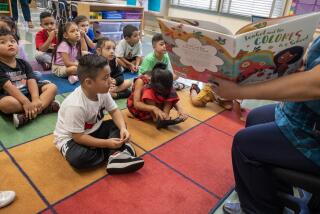Poll finds Californians remain unhappy about public schools

If California public schools were graded the way students are, the result would be a middling “C” grade, according to a new poll.
The PACE/USC Rossier School of Education poll found that about 45% of respondents, the largest share, said they would give California public schools a C. Fewer than 1% awarded the schools an A and about 9% judged them worthy of a B. More than 25% went for a D and nearly 14% said a failing grade was deserved.
The “report card” was a bit better when poll participants -- 1,001 California registered voters -- were asked about their own local public schools. The largest group, with more than 37%, still gave a C but 25% went for a B and nearly 5% for an A, and only 24% combined chose a D or F.
California voters last fall approved Proposition 30, which increased state sales tax and some income taxes, with much of the money dedicated to education funding. However, more than 53% of respondents in the new poll said they saw no effect so far on public schools, while only 20% said the ballot measure helped, about 5% said it had hurt schools and 22% said they did not know.
The poll showed some improvement in opinions about public schools since last year. About 13% said they felt public schools have gotten better in the past year, about double the percentage in last year’s poll. About 48% said schools had gotten worse, down from about 57% in 2012.
Jeff Harrelson, a partner with MFour Mobile Research, a Republican-leaning firm that helped conduct the survey, said results show that voters remain upset about education despite the modest change. Across California, the survey is evidence of “a very high dissatisfaction with the state of public education,” he said.
Tulchin Research, a Democratic-leaning firm, also worked on the survey. The poll is sponsored by a partnership between the USC education school and Policy Analysis for California Education, a research center based at USC, Stanford University and the UC Berkeley.
The poll was conducted Tuesday through Friday last week and is reported to have a 3.5% margin of error.
Harrelson said respondents answered online using various devices, including laptops and smartphones. He said that the participants were chosen to reflect the state’s voters based on income, ethnicity and geography and that the online methodology did not slant results toward an upper-income viewpoint.
ALSO:
Passengers removed after boat drifts into Newport Pier
Driver who ran red light dies in Atwater Village crash, police say
Vincent Thomas Bridge will close Labor Day morning for marathon
Twitter: @larrygordonlat
More to Read
Sign up for Essential California
The most important California stories and recommendations in your inbox every morning.
You may occasionally receive promotional content from the Los Angeles Times.











